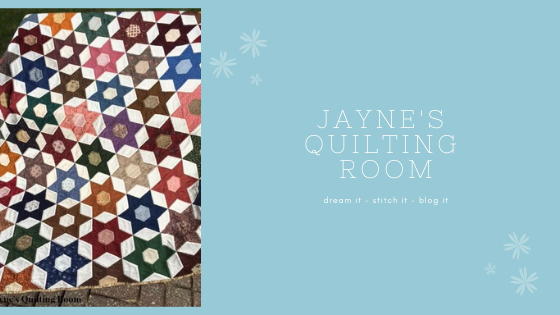I have been off-schedule in getting my thoughts together for part 5 of my series. With just a few quilts remaining to share, these seem to be the ones that defy a logical "category" - these have a special uniqueness to them.
This redwork quilt is quite a study. The block above dates it to 1894. The blocks are a variety of sweet designs, and I sure wish I'd taken more individual pictures of them. There is not any quilting on this; instead it is tied at each intersection with red yarn. Someone with some background in old patterns might recognize some of those represented in this quilt, thus the possibility of learning more. Thankfully, a date is available, but little else to go on from my limited knowledge.
It's a brave quilter who will tackle a Star of Bethlehem quilt. (Or in my case, a naive one. Part of the story of mine can be found here.) The many bias edges make for the increased danger of losing the straight of grain, thus resulting in a quilt that won't lay flat or that has puckers which are difficult to "quilt out."
The name Star of Bethlehem is not the only one for quilts like. I found a very similar one referred to as Lone Star; and some slight variations such as Texas Star and my version which is Broken Star.
This is a very pretty example with a warm color-scheme. I like how smaller stars are used in the open spaces around the edges. The stars are quilted with a quarter-inch outline in each diamond. The white spaces are cross-hatched. Closer inspection does reveal some staining, but the overall impact of the quilt is in no way diminished. It is a stunning quilt.
I will conclude today's offering with two quilts that do not qualify as antiques. First, while the actual age is unknown, this interesting quilt is made of fabrics that look too modern and the stitching is less dense to be considered antique. My guess is that it might be less than 30 years old. I have searched a bit for the name of the pattern. One pattern that very closely resembles this is called Sage Bud. The major difference is that the center square of each block is very large; on Miss Rebecca's quilt, the center square is much smaller. Another close match calls it a Lily.
The border on this is a broken zigzag. It would have been difficult to figure out how to turn that corner with the design and keep going. I wonder how much concern the quilter had for making that work out? Sometimes, we just want to be done with it.
The first picture of this quilt has the bottom turned up so that the backing shows. It adds to my theory that this is a newer quilt. It just looks newer. The entire quilt is in good shape with no fading; plenty of each color without "making do" with close matches. It seems likely that the quilter had a pattern, shopped for the fabric she needed, and proceeded to make the quilt without concern for running out.
This last quilt is quite new, as it was gifted to my friend Mrs. B. when she retired from teaching just a few years ago. As an elementary teacher, the maker knew that primary colors would be perfect, and look at that pieced back. What a wonderful way to use the leftovers. The top is made in the "Stack and Whack" method; the border is what I refer to as 'piano key" - again, in great primary colors.
I have a special treat in store for the final installment. Please stop back by here, oh say, later this week, for a wee surprise. If you are interested in seeing the beauties that came before these, here are the links: Part 1; Part 2; Part 3; Part 4.
Happy Quilting, Friends!















Those quilts are very pretty. I really like the redwork and I always wanted to attempt a Lone Star quilt. Hmmm, maybe not.
ReplyDeleteI've been looking for an antique feathered star quilt for years. Still looking. I love old quilts!
ReplyDelete